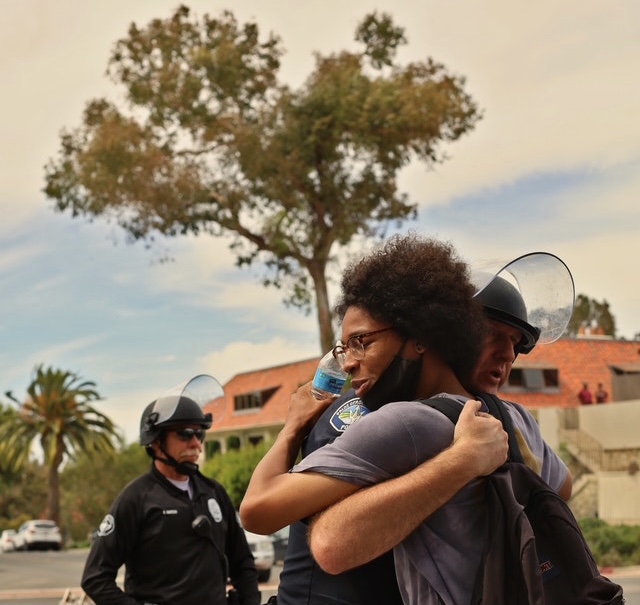Introduction
Community policing standing out as a beacon of progressive change. This blog post aims to dissect the principles of community policing, a strategy that has reshaped our interaction with the communities we serve. It’s more than a policing tactic; it’s a philosophy that intertwines community partnership, organizational transformation, and problem-solving into the fabric of law enforcement.
The Essence of Community Policing
Community policing is not a new concept, but its application and significance have become increasingly relevant in today’s complex social fabric. It’s a strategy that promotes organizational strategies, which support the systematic use of partnerships and problem-solving techniques. These strategies proactively address conditions that give rise to public safety issues such as crime, social disorder, and fear of crime.
Core Principles of Community Policing
1. Building Trust and Legitimacy
Trust: The Foundation Stone
The bedrock of community policing lies in trust. Without trust between law enforcement agencies and the communities they serve, effective policing remains a distant dream. Building trust involves transparency, accountability, and constant communication.
Legitimacy: Earned, Not Given
Legitimacy in policing is not just about the legal authority to enforce laws. It’s about the perception that the police are fair, just, and serving the best interest of all community members.
2. Partnership: Beyond the Uniform
Collaborative Engagement
Community policing advocates for a partnership where police and community members share responsibility for problem-solving. Engagement goes beyond responding to incidents. It involves collaboration in setting priorities, developing strategies, and implementing solutions.
Empowering Communities
Empowering community members to take an active role in their safety is pivotal. This involves education, community meetings, and involving residents in decision-making processes. This can be achieved by conducting on-going surveys.
3. Proactive Problem-Solving
Addressing the Root Causes
Proactive problem-solving in community policing involves identifying and addressing the root causes of crime and disorder. It’s about moving from a reactive stance to a proactive, preventive approach.
Data-Driven Strategies
Leveraging insights from community engagement surveys through data and analytics is fundamental in modern community policing. It aids in discerning patterns of crime and ensures the strategic allocation of resources for maximum effectiveness.
4. Organizational Transformation
Culture Change
Community policing requires a cultural shift within law enforcement agencies. It necessitates a move from a traditional law enforcement mindset to one that values community partnership, proactive problem-solving, and organizational flexibility.
Training and Education
Officers need training that goes beyond traditional law enforcement tactics. They need education in interpersonal communication, cultural awareness, ethics, and problem-solving strategies.
Implementing Community Policing: Challenges and Strategies
Overcoming Resistance
Change is often met with resistance. Overcoming skepticism within the police force and the community requires strong leadership, clear communication, and demonstrable benefits.
Resource Allocation
Effective community policing requires adequate resources, both in terms of personnel and technology. Balancing these needs with budget constraints is a constant challenge.
Measuring Success
Quantifying the success of community policing initiatives can be complex. Success metrics should include crime statistics, community satisfaction, and the quality of police-community interactions.
FAQ
Q1: How does community policing differ from traditional policing?
Community policing focuses on building relationships and working collaboratively with community members, emphasizing proactive problem-solving and community engagement, rather than just responding to incidents.
Q2: Can community policing effectively reduce crime?
Yes, when implemented effectively, community policing can lead to a reduction in crime and disorder by addressing the root causes and involving the community in problem-solving efforts.
Q3: How important is officer training in community policing?
Officer training is crucial. It should cover not just traditional law enforcement tactics but also interpersonal communication, cultural awareness, ethics, and community engagement strategies.
Q4: How can police departments measure the success of community policing?
Success can be measured through a combination of crime statistics, community feedback, and the quality of interactions between police and community members.
Q5: What role do community members play in community policing?
Community members are essential partners. They are encouraged to share responsibility for their safety by participating in problem-solving efforts, providing input on policing strategies, and engaging in open dialogue with law enforcement.
Conclusion
Community policing is not just a set of tactics; it’s a philosophy that requires commitment, cultural change, and collaboration. As a veteran in law enforcement, I’ve seen its power in bridging gaps between the police and the community, reducing crime, and fostering an environment of mutual respect and understanding. It’s a journey of partnership, trust-building, and continuous improvement. As we move forward, let’s embrace these principles, not just as a strategy, but as a cornerstone of modern, effective law enforcement. Click here to get started today.








